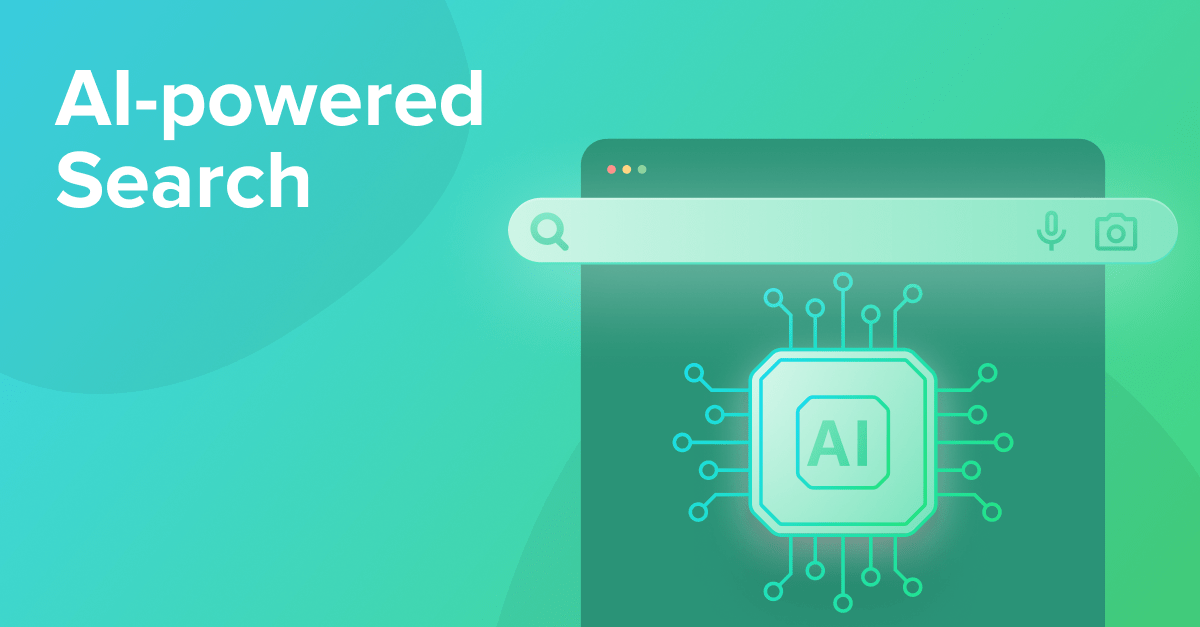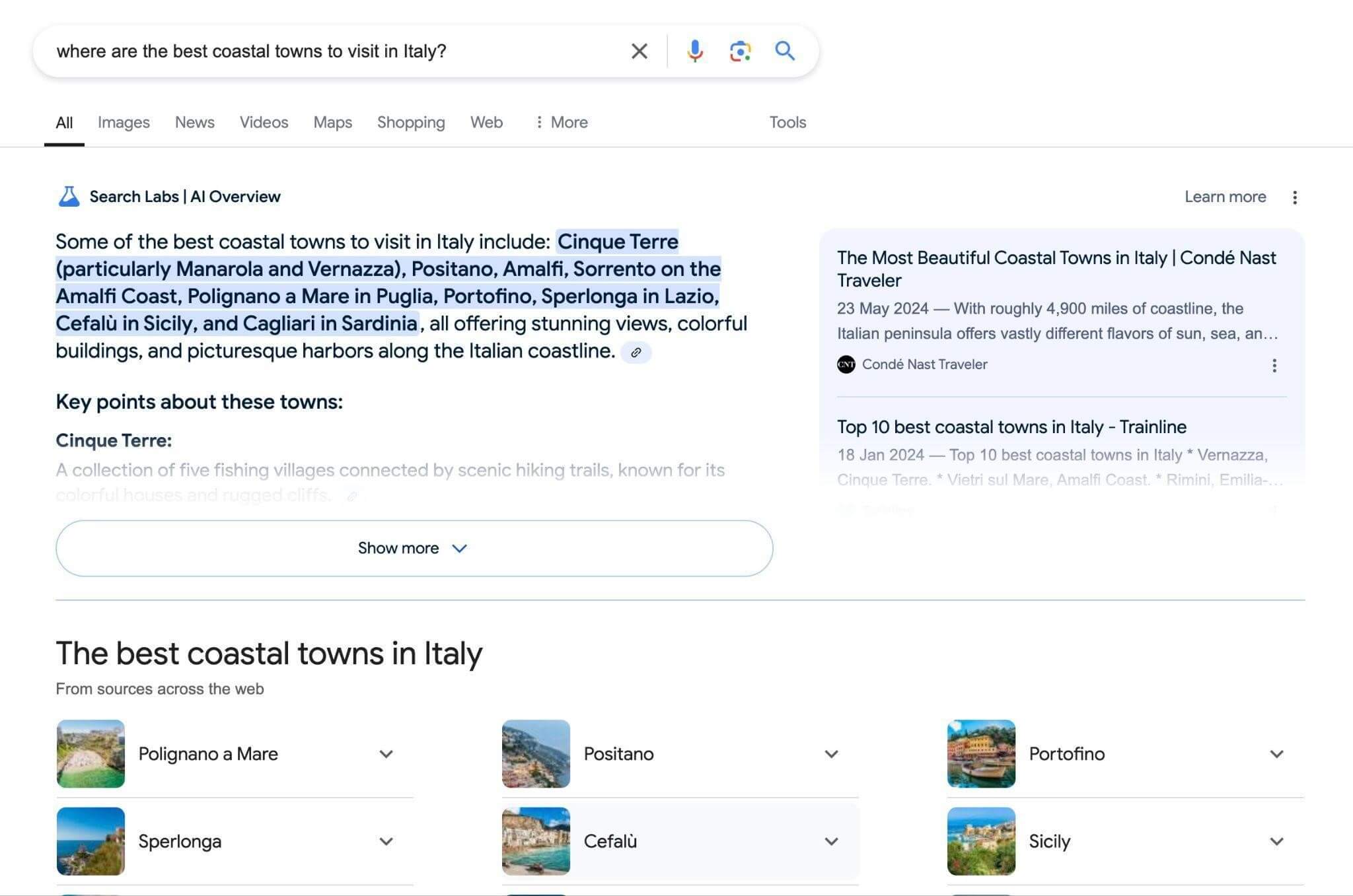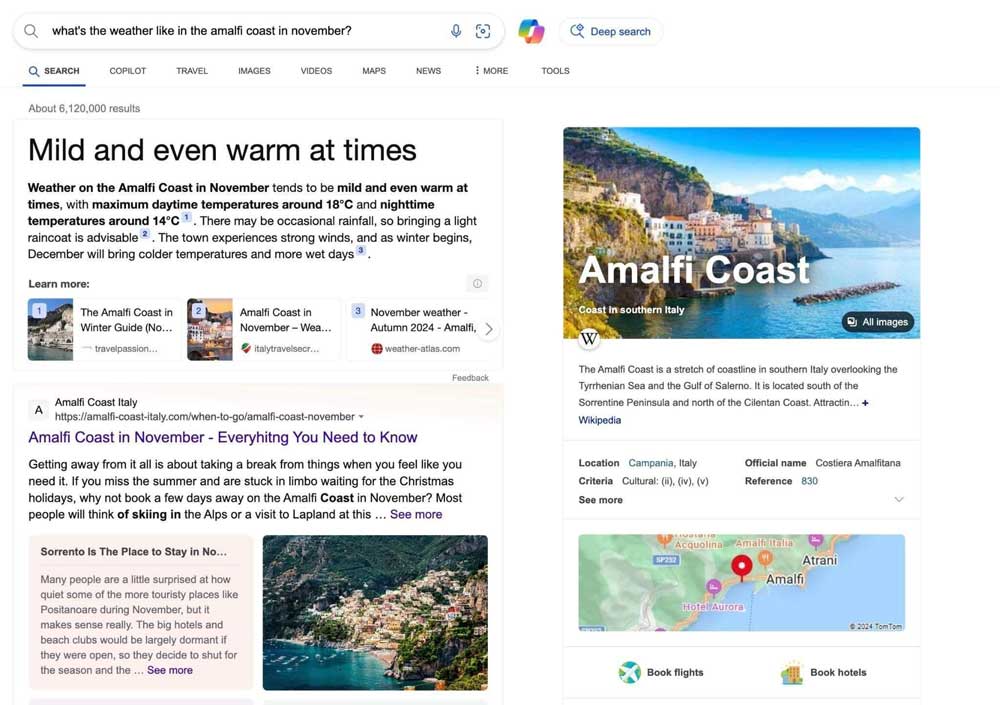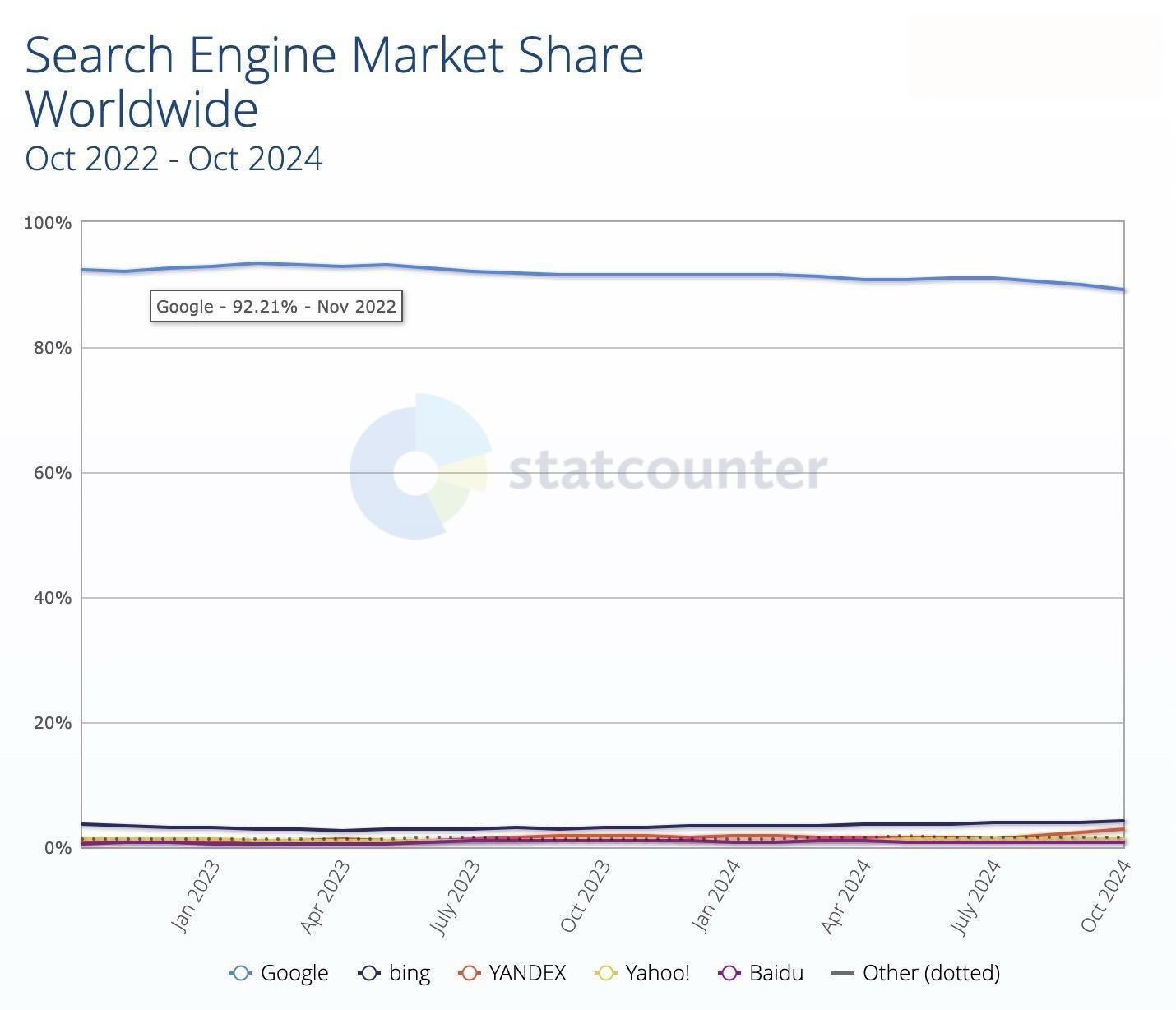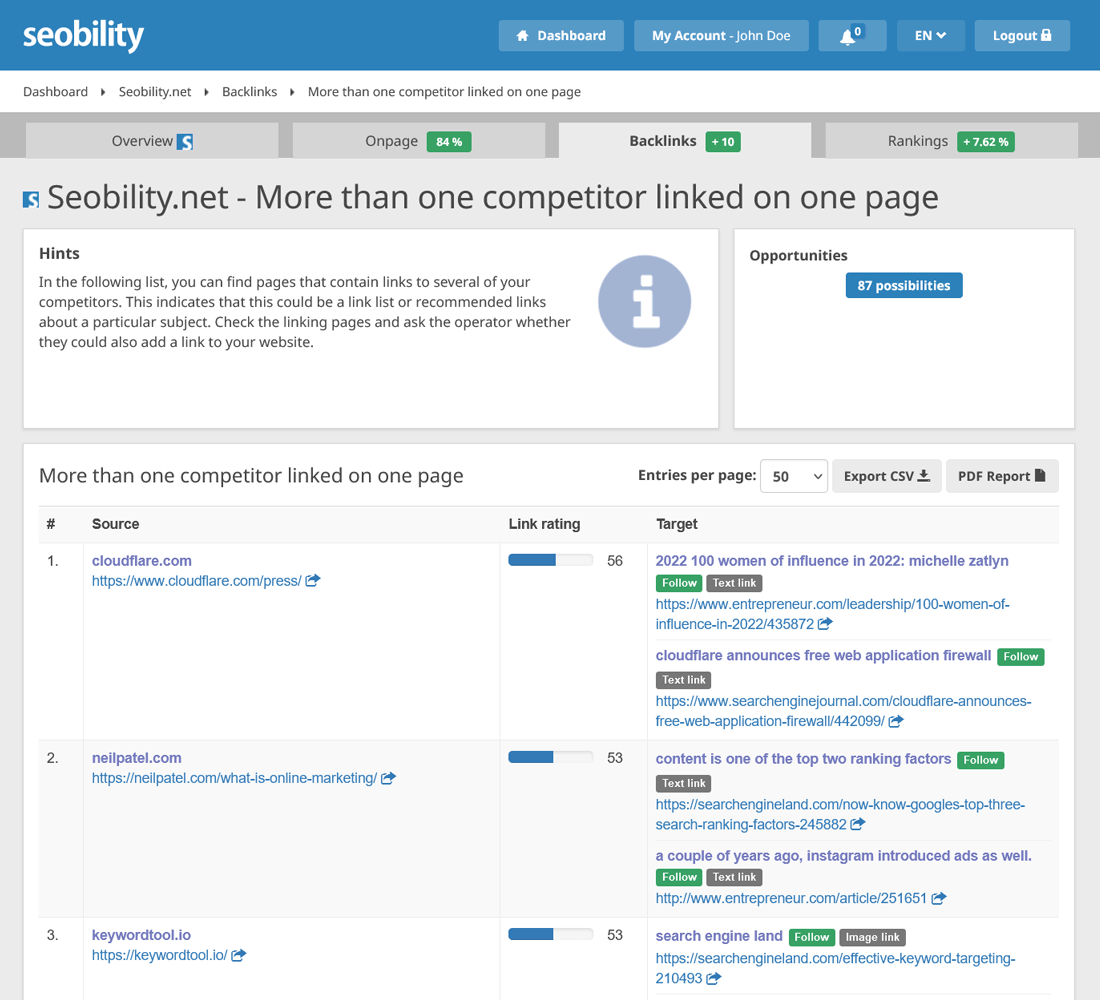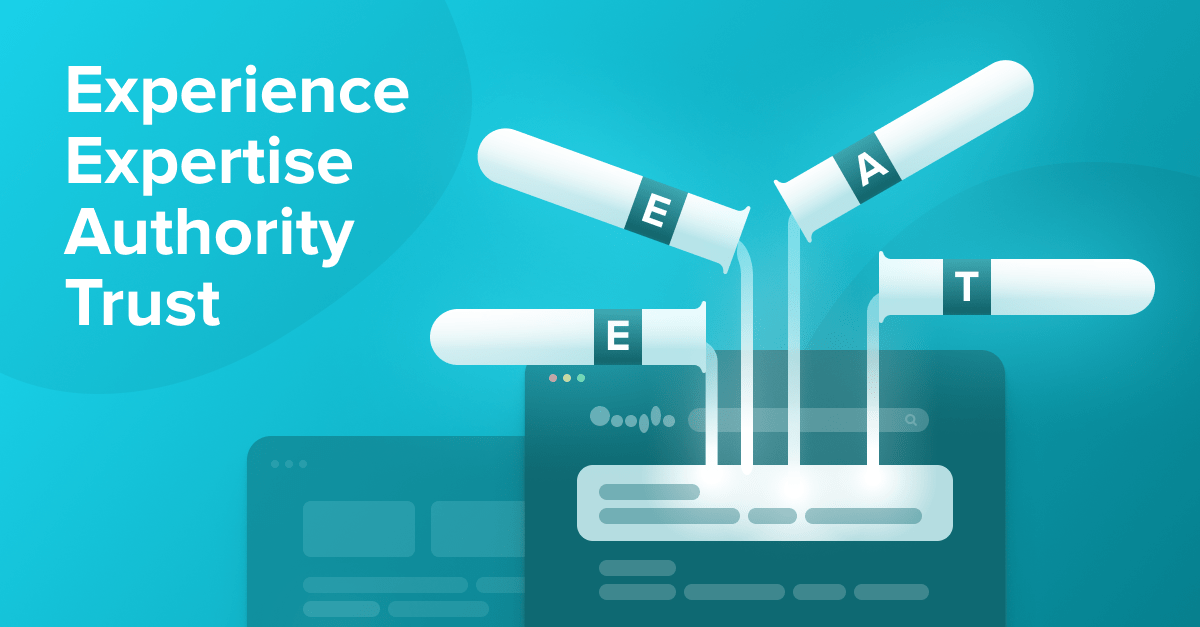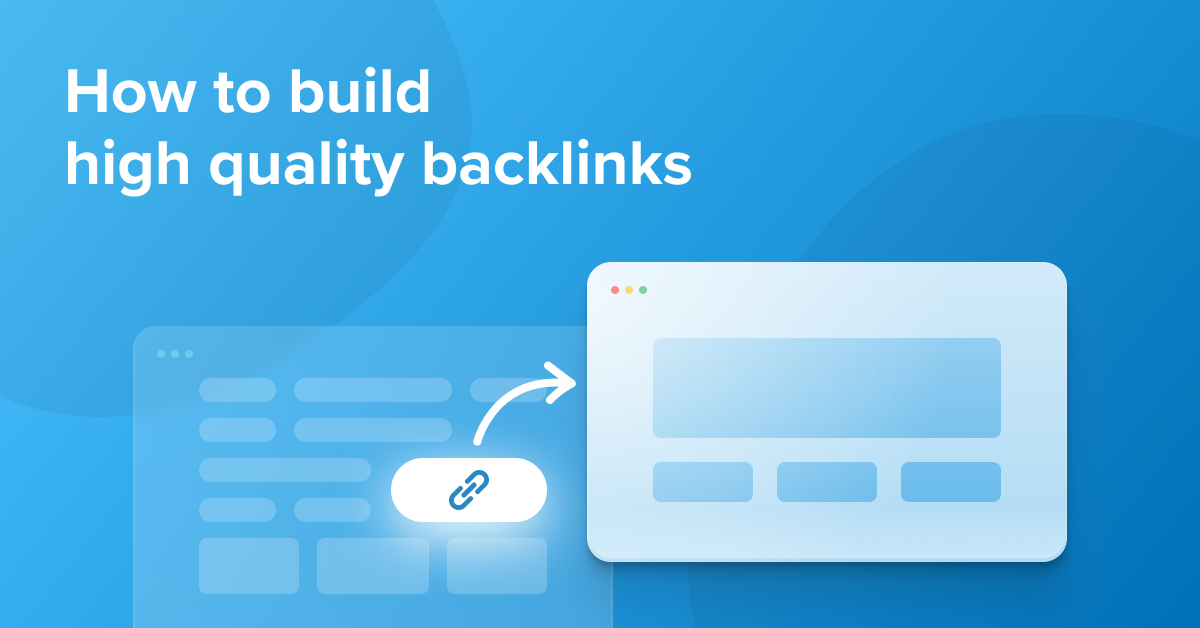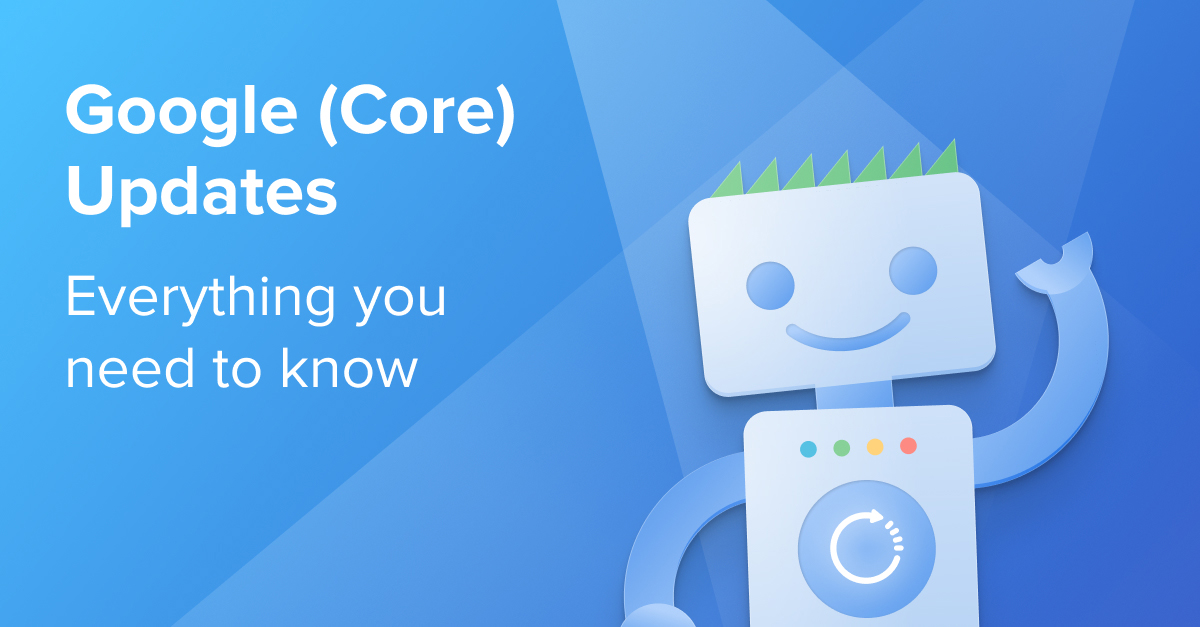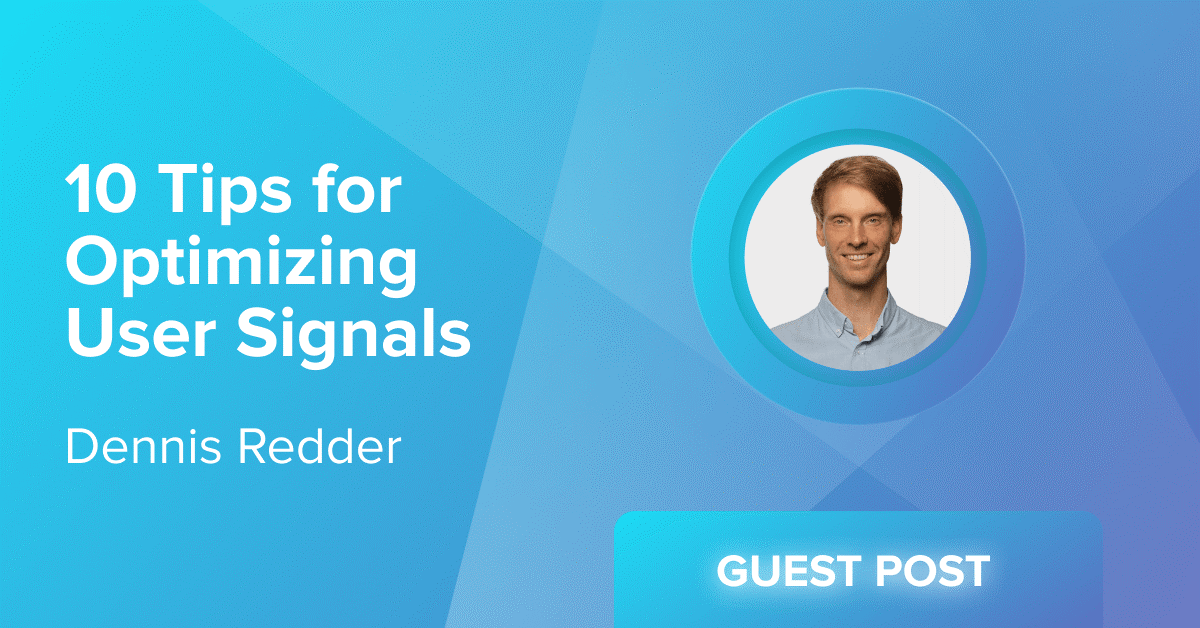In recent months, advancements in AI technology, such as ChatGPT search, Google’s AI Overviews, Perplexity, and many others, have excited and concerned the SEO community.
With AI-powered search capabilities developing so quickly, it’s no wonder that many SEOs are struggling to keep up with the latest changes and how to adapt their strategies for the future.
In this article, we’ll summarize the latest developments and give you a clear picture of how AI-powered search is currently affecting search experiences, user behavior, and SEO practices. Plus, we’ll share practical tips to help you stay successful in this changing environment and prepare your SEO strategy for what’s coming next!
Let’s start by taking a look back at how AI has shaped search engines in recent years, and introduce you to the key AI-powered search engines and features you should know about.
The evolution of AI in search: A quick recap
While AI-powered search may seem like a recent development, artificial intelligence has been quietly enhancing search engines for nearly a decade. Here’s a quick timeline to give you some context:
- 2015: Google unveiled RankBrain – its first machine learning algorithm capable of training itself without the input of engineers.
- 2018: BERT arrived, improving Google’s ability to interpret and answer search queries.
- 2021: Google introduced MUM, claiming it’s 1,000 times more powerful than BERT.
These AI-powered algorithms help Google…
- better understand human language and its many nuances, even when users don’t phrase their queries precisely.
- deliver more personalized and relevant search results by learning from people’s behavior and past searches.
- determine which web pages are most useful by evaluating their content and trustworthiness.
- provide advanced search features, such as image and voice search, offering new ways for users to find information and interact with technology.
By continuously learning from data, AI has helped to make Google smarter and more accurate, and the search experience faster and more efficient.
While each of these updates represented a significant leap in search technology, the progress felt gradual within the familiar search experience. It wasn’t until conversational AI tools like ChatGPT entered the scene that the potential for dramatic change became apparent.
The current landscape of AI-powered search
Google is certainly a dominant force in AI as a leader in the search engine space, but the competition is heating up. AI is changing the nature of search and ChatGPT isn’t the only rival Google has to think about.
Let’s take a closer look at the most important developments in AI-powered search to date.
Google Search
As mentioned above, Google has been powering its search engine with AI under the hood for almost a decade now. But so far, the only meaningful integration of generative AI into the Search experience – in response to ChatGPT – is AI Overviews.
Although Google has also developed its own AI chatbot, Gemini, it is currently not capable of searching the web.
If you have access to Search Labs, you can also opt in to experimental Search features like AI video search, advanced AI Overview adjustments, and intelligent topic exploration.
Summary of Google’s key AI Search features:
- AI Overviews: Complete answers or summaries in response to queries, generated by Google’s Gemini large language model (LLM) from existing content around the web. They are currently being displayed to users in the United States, the UK, and around 100 other countries around the world.
- Search by image: Search based on image files or links using Google’s AI image recognition technology, called Reverse Image Search.
- Search Labs: Access to the latest experimental AI features in Google Search, including AI Overview adjustments and follow-up questions (only available to select users).
Microsoft Bing
Microsoft’s heavy investment in OpenAI helped it beat Google to the punch in implementing generative AI into its search engine. Microsoft was the first to launch a product like Copilot, its GPT-powered AI Assistant, and integrate the AI-powered platform into its search engine.
In a market where Bing has a reputation for playing catch-up to Google, Microsoft has in many ways been the more ambitious and innovative of the two in powering search with the latest AI technology.
Bing’s AI features are available in almost all countries (with Russia and China being the most prominent exceptions to their worldwide availability).
Summary of Microsoft’s key AI features:
- AI summaries: Microsoft’s equivalent of AI Overviews, combining the power of LLMs and search results (but with the significant difference that they don’t use Reddit content, which Google paid £47 million to scrape).
- Deep search: Enhances Bing’s search results with GPT-4 generative AI, analyzes your query in greater depth and digs deeper into the web for the most relevant results.
- Microsoft Copilot: Send your query to Copilot, Microsoft’s AI assistant, with a single click.
- Search with images: A feature similar to Google’s AI-powered image search.
ChatGPT search
OpenAI’s implementation of search functionality in ChatGPT turns the platform into a direct competitor to Google and other search engines.
In the battle of old vs. new, ChatGPT’s contextual capabilities bring some interesting strengths compared to traditional search engines. For example, it can handle natural language queries like “give me all the latest announcements from OpenAI” fairly well.
Unfortunately, ChatGPT can also confidently return outdated results from several years ago and label them as “recent” – so it’s a mixed bag. ChatGPT search is also running into problems with accuracy and correctly attributing information to publishers, news outlets and other original sources.
ChatGPT search has a lot of catching up to do in other areas, too. Its map implementation isn’t a viable alternative to Google Maps and Business Profile for local SEO, while it lacks any equivalent to Google Shopping, Hotels and other features.
Its geographic availability is similar to Bing’s.
Summary of ChatGPT’s key search features:
- ChatGPT search: Click the “Search” function in ChatGPT to search for web results based on your query.
- News partnerships: Search for news among OpenAI’s growing list of publishing partners, including Associated Press, Reuters, The Atlantic, Times and many more.
- Data visualisations: View the latest information for news, sports, weather and stocks in the form of graphic data visualisations.
- Maps: Find local businesses, services and places to visit with ChatGPT’s Map results.
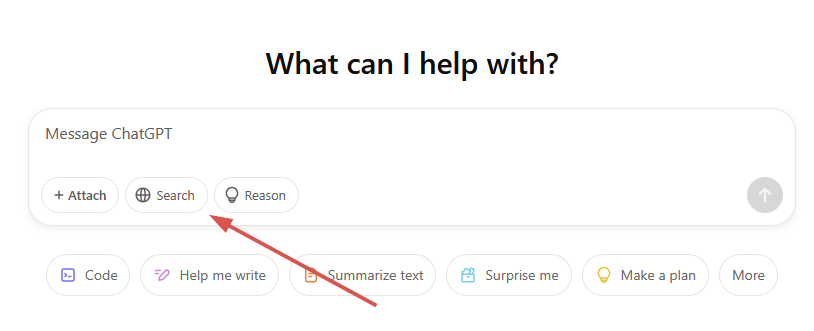
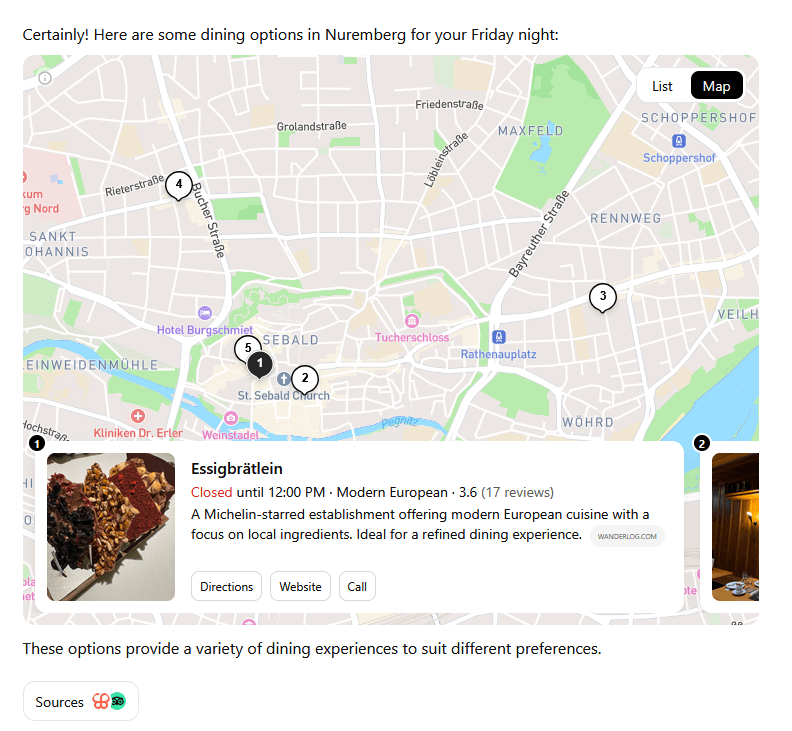
Perplexity AI
Perplexity (which is available globally) doesn’t just add generative AI to search, or add search to generative AI – it was built from the ground up as an AI search engine. Perplexity might offer the best indication of what the future of AI search looks like: a mix of traditional search and generative AI in a single, seamless experience.
With Google’s AI teething problems, ChatGPT’s search infancy, and Bing’s modest increase in market share, could the future of search lie in purpose-built AI search engines like Perplexity?
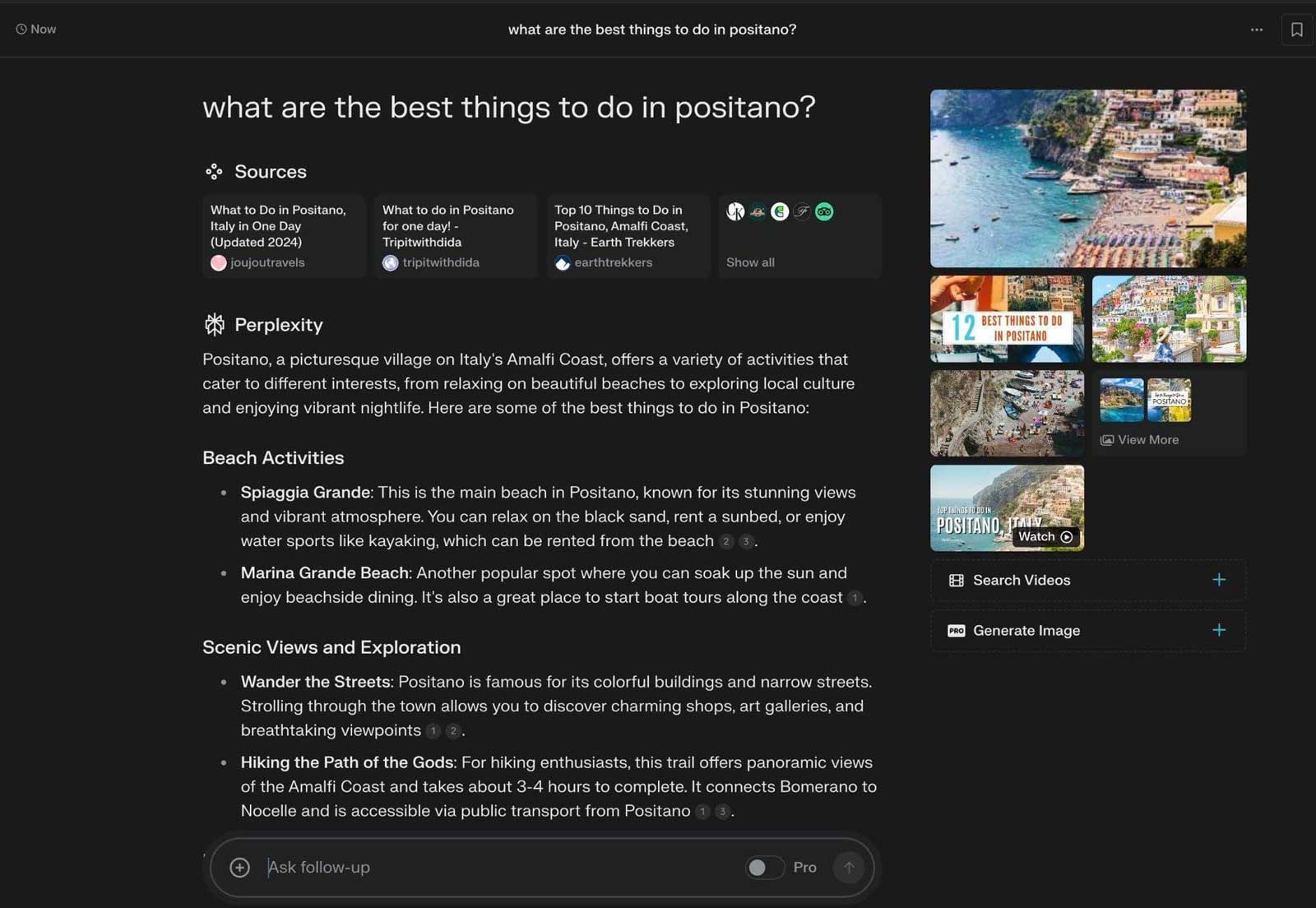
Key features:
- Conversational search: Think of ChatGPT and Google’s AI Overviews rolled into one experience.
- AI answers: AI-generated answers, powered by GPT-4 and web results.
- Web result sources: Click through to web sources used to generate answers at the top of the page.
- Image and video search: Search for images and videos directly from Perplexity.
- Generate images: Generate visual content using tools like Dall-E 3 and Stable Diffusion XL.
- Related questions: Explore topics with suggested related questions, similar to Google’s “People also asked” section.
There are also other niche AI search engines of note specific to SEO opportunities, including Brave Search. This is a privacy-focused AI search engine that provides secure search experiences, appealing to users concerned about data privacy.
Now that you have an overview of the main developments in AI-powered search, let’s look at how these developments are affecting the search engine market and user behavior.
The impact of AI on the search engine market and user behavior
Google is still the top search engine with an 89.33% market share in October 2024. However, this is its lowest market share in over a decade (89.27% in March 2014) and the first time it’s dropped below 90% since March 2015. There is also a correlation between the growth of AI and ChatGPT on the one hand, and competition with the main search engines like Google on the other.
Will generative AI replace traditional search engines?
The narrative of generative AI replacing search engines started as soon as ChatGPT hit the mainstream. First impressions took the web by storm and ChatGPT has some genuine strengths vs traditional search:
- Almost instant results
- Relevant responses
- Complete answers
- Great for generating ideas, lists and summaries
- No need to click through to websites
- Engaging, conversational experience
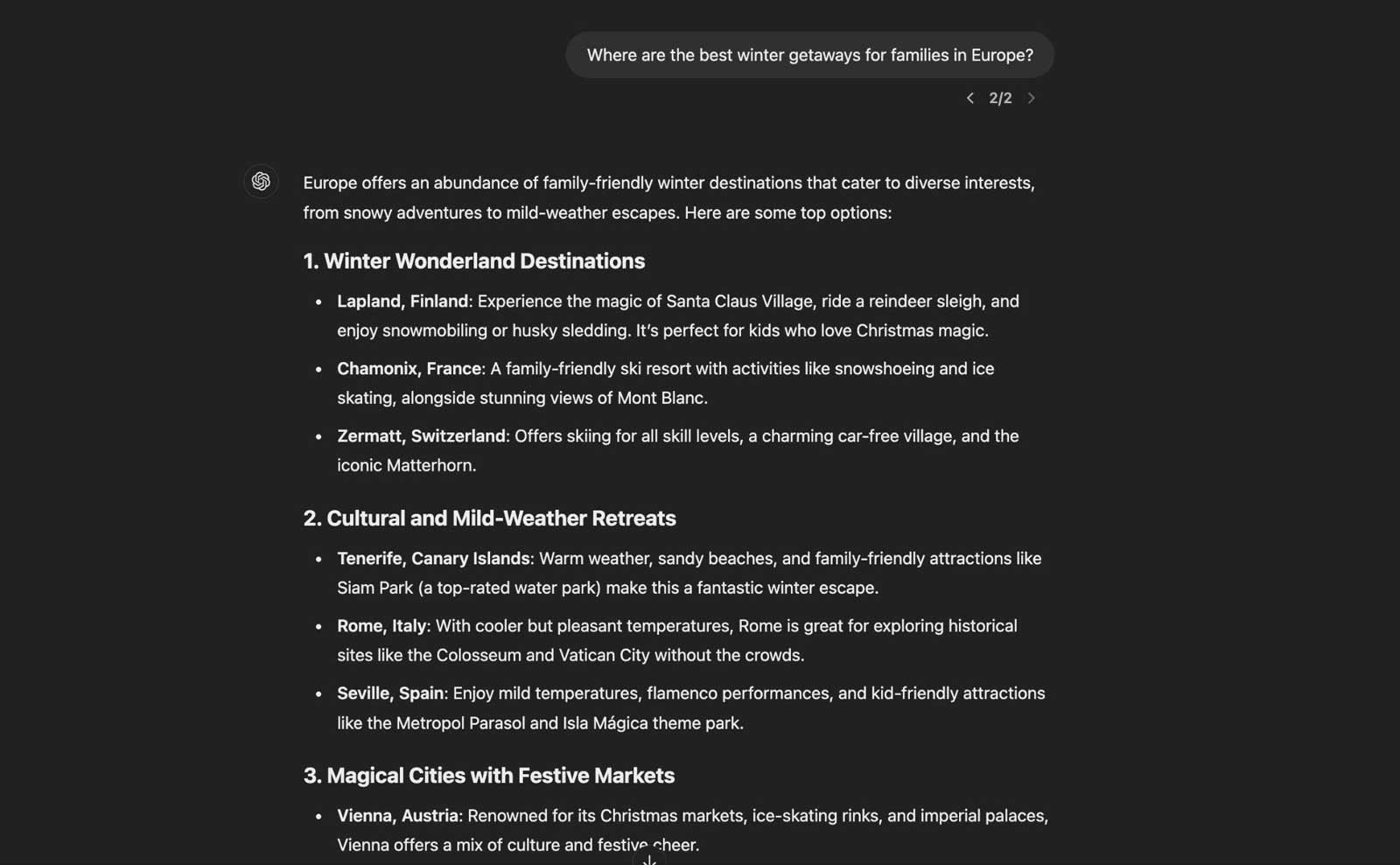
There is also the novelty factor of an AI system that understands user inputs, while its ability to generate convincing answers, seemingly from scratch, continues to impress.
However, generative AI brings its own set of weaknesses to the table:
- Reliance on data access and existing content: AI models depend heavily on the quality and breadth of their training data.
- Copyright, ownership and attribution concerns: AI-generated content raises complex legal and ethical questions about intellectual property rights and proper attribution of sources.
- Inaccurate information: AI can produce false or misleading answers, especially when dealing with recent events and specialized or niche topics.
- Lack of depth: AI-generated content often provides surface-level information without the nuanced understanding, in-depth expert analysis or first-person perspective that humans can offer.
- Declining quality of data and outputs: As AI systems are increasingly used to generate content for the web, which in turn is used to train the AI systems, there’s a risk of a feedback loop that gradually degrades the quality of information over time.
What the data says
According to Adobe, traffic from AI-powered chatbots doubled in 2024, while referrals to retail sites from citations in tools like ChatGPT has increased eightfold since 2023.
The same survey found that two in five consumers planned to use generative AI for holiday shopping in 2024. Seven in 10 who use the technology for retail believe it enhances the experience.
The headlines suggest that shoppers are ditching search engines for generative AI. However, the data doesn’t show that people are using search engines any less or using tools like ChatGPT to replace search. Instead, they may simply be using AI tools in addition to the familiar search engines.
We’re coming to understand that the age of generative AI requires us to regard all claims with a critical eye and question their sources. Perhaps we can put more faith in joint research from Reuters and the University of Oxford on the use and perception of generative AI.
The key findings of their study tell a different story than you might expect from the tech journalism headlines:
- ChatGPT is two or three times more widely used than Google Gemini and Microsoft Copilot.
- Yet only 2% of people in the UK and 7% in the US use ChatGPT on a daily basis.
- 25% haven’t heard of any of the most popular AI tools.
In a study of the most common use cases of generative AI, Harvard Business Review finds the following:
- Technical assistance & troubleshooting (23%)
- Content creation & editing (22%)
- Personal & professional support (17%)
- Learning & education (15%)
- Creativity & recreation (13%)
- Research, analysis & decision making (10%)
According to Ofcom data, more than half of adults haven’t yet tried generative AI, with 38% saying they’re “not interested”. Among those who use generative AI, finding content is the top reason, but fewer than one in five (18%) trust its output.
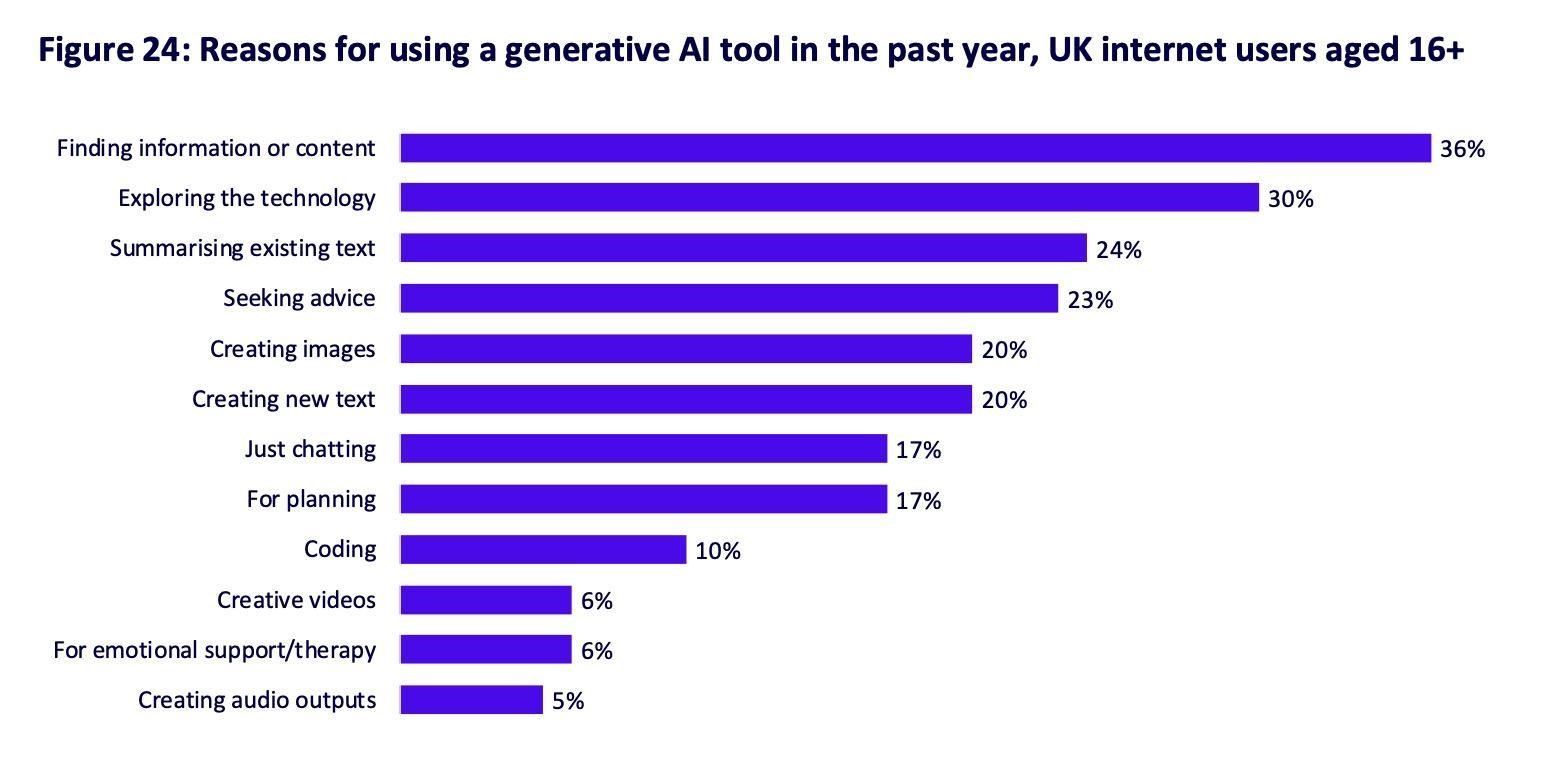
What this data shows is that AI tools have not really made it into the mainstream yet. However, as the technology continues to improve, this could change in the next few years.
Search is already expanding beyond Google and traditional search engines, even without the impact of AI. About half of product searches already take place on Amazon while Gen Z increasingly turns to Instagram and TikTok to find places to eat and other local businesses. Likewise, when people want to book a hotel room or have a take-out meal delivered, they’re more likely to use apps like Booking.com and Deliveroo than traditional search engines.
It’s too early to say whether AI will have a comparable impact on search behavior. Right now, we’re rather seeing a deeper integration of generative AI technology into traditional search engines like Google and Bing, instead of ChatGPT completely replacing search engines.
Still, this shift is already creating new challenges for brands. To stay ahead, they must track their visibility across AI platforms as well as traditional search. AI rank tracker tools like Keyword.com‘s AI Search Visibility, for example, allow businesses to monitor performance across ChatGPT, Perplexity, Gemini, Google’s AI Overviews, and more.
But even with Google remaining the search leader for the time being, there’s another big uncertainty that SEOs are facing right now: will Google’s AI overviews and similar AI features steal away their valuable search traffic?
AI Overviews: Fears vs reality

AI overviews provide quick and comprehensive answers to user queries by bringing together information from multiple sources and displaying them in easy-to-digest form, often in a conversational tone (depending on the search query type).
In the context of SEO and SERP features, AI Overviews represent a significant change as they aim to answer user questions directly on the search results page, potentially reducing the need for users to click through to individual websites. But AI Overviews also present new opportunities for brands and websites to become visible within the overviews.
As of October 2024, Google AI Overviews have expanded significantly. They are available in over 100 countries and territories worldwide and accessible to more than 1 billion global users monthly. AI Overviews are now supported in multiple languages, including English, Hindi, Indonesian, Japanese, Portuguese, and Spanish.
The presence of AI Overviews on results pages has varied greatly since rollout. Early analyses found as many as 84% of searches returned AI Overviews, but Google has pulled back the feature multiple times.
More recent insights put AI Overview prevalence as low as 7%, and this figure is expected to fluctuate overall, as well as by query type and sector.
The actual impact of AI Overviews on CTRs and traffic volumes is also difficult to measure, especially as Google is still making changes to the feature, adjusting the frequency it appears, etc. Early studies reported traffic drops of up to 64%, but this was shortly after the feature was launched when it was displayed much more frequently than it is today. Other publishers claim that Google’s AI overviews are not hurting their traffic. And there are also a number of other studies that suggest something in between these two extremes, depending on the niche you operate in and the type of query. For example, a recent analysis from February 2025 shows that for 10,000 informational queries with AI overviews, the organic CTR dropped from 1.41% to 0.64%.
In summary, the only thing we can say for sure is that the actual impact of AI Overviews will depend on your individual situation, such as the industry you work in, the search intent of your target keywords, etc. So keep a close eye on your site traffic when they launch in your country or when Google releases updates to them.
Key SEO strategies for the age of AI search
The pace of change with AI search, combined with a lack of historical data for features like AI Overviews, makes optimization challenging. So how can you adapt for the age of AI search when the goalposts keep moving?
Plan for the long game
AI’s impact on search is still in the early disruptive phase. In five years, generative AI may or may not be the biggest driver of the search experience.
The only certainty is that AI’s role in search will continue to change.
For example, Google has reduced the frequency of AI Overviews multiple times since rolling them out. If you overinvested in AI Overviews optimization over the last yea , you’re already counting your losses.
But new developments like AI Overviews do create new opportunities, and you should absolutely keep an eye on them as part of your overall approach to SEO and digital marketing.
You should also keep in mind that the vast majority of the core principles of SEO and marketing remain core pillars of professional practice (more on this in the next sections). Don’t lose sight of them by focusing excessively on the newest trend or latest opportunity.
AI Overviews are here to stay. They present new ways to gain visibility in search engine result pages, but they’re just one tactic to explore as part of your broader strategic focus.
Maximize organic search visibility
The most effective way to optimize for AI search may also be the least innovative. Generative AI favors information from high-ranking and widely-cited web pages because these pages are the most likely to provide accurate information.
This is especially true for AI features like AI Overviews in existing search engines. Unsurprisingly, the likes of Google and Bing favor the same criteria to identify high-quality, accurate and valuable content in their generative AI results. High search rankings, high-quality (relevant) inbound links, brand citations, and other reputational signals give AI more reasons to cite your content.
So by continuing to optimize your website for traditional search (e.g. using SEO software such as Seobility), you will also increase your chances to be cited in AI Overviews and similar features.
Give search engines and AI the accuracy they need
Accurate information is a priority for search engines, but it’s also one of AI’s biggest weaknesses. Google, in particular, has some of the strictest content quality and accuracy criteria, largely set out in its E-E-A-T and YMYL guidelines.
Give search engines and AI the accuracy they’re looking for:
- Optimize to the highest E-E-A-T and YMYL standards
- Cite high-quality, trusted sources in all of your content
- Use verified information as the basis of your key points, arguments, etc.
- Avoid making claims you can’t back up
- Fact-check everything you publish
- Update content regularly to maintain accuracy
The age of generative AI is also the age of misinformation – a critical issue for the technology itself and for search engines alike. The legitimacy of search and generative AI hangs on their ability to deliver accurate information.
Be part of the solution they’re looking for.
The more you are able to demonstrate expertise, trust, and experience, and to back it up with data, external validation and other signs of quality, the greater your likelihood of gaining visibility within these potential areas of online growth.
Become the original source of trusted information
Citing verified information is a great way to reinforce the accuracy of your content. But nothing beats being the original source of trusted information that publishers, writers, and AI algorithms love to cite:
- Surveys, studies, and reports
- Expert data analysis
- Interviews with industry experts
- Case studies offering unique insights
- Data-driven thought leadership content
This isn’t a quick fix or an overnight SEO hack. You have to build the connections and datasets required to produce original insights. This takes time, but the payoffs are huge – both with traditional search and generative AI.
Build legitimacy with backlinks and digital PR
We know that links are one of the most important ranking factors in organic search, and it seems they also help pages feature in Google’s AI Overviews.
While there’s a lack of real-world data to support this correlation in these early days of generative AI, it makes sense that inbound links play an important role:
- High-quality links boost organic rankings.
- High-ranking content is more commonly featured in AI results.
- Search engines interpret links as votes on the quality, relevance and value of a web page.
- Search engines seem to value the same ranking factors in their generative AI results.
- Inbound links typically increase brand mentions and discussion.
- AI appears to have a bias towards highly cited brand names and sources.
Generative AI and features like AI Overviews tend to play it safe by repeating information that’s present in multiple sources. Such information is less likely to be misleading, inaccurate, or offensive.
By the same logic, if you can associate your brand name with information across multiple sources, then you’re a safer bet for AI algorithms. For example, if you own an online store selling running shoes and your brand name is mentioned in several articles about the best running shoes across the web, this signals to the AI algorithms that your brand name is relevant to the topic of running shoes.
This strategy leverages the concept of entity recognition and authority building, which are crucial for modern SEO and AI-powered search. Here are some examples of this in action:
- Diverse content placement: Create and distribute content across various platforms such as industry blogs, news sites, and social media. Often this requires creating useful and helpful content assets that you can promote externally and share to relevant third-party websites.
- Brand mentions and citations: Encourage mentions of your brand without necessarily requiring a link. This could include podcast appearances, expert quotes in news articles, or being listed in industry roundups. This type of brand exposure helps build trust with your brand and associate it with related core topic areas you wish to be connected to online.
- Community engagement: Actively participate in online communities relevant to your industry. This could involve answering questions on Quora or contributing to Reddit discussions. Sharing key voices in your company can support inclusion in AI Overviews.
- Press releases and media coverage: Distribute newsworthy updates about your brand through press releases and seek media coverage for significant achievements or innovations. The more coverage your brand has, the easier it will be able to be discovered and presented in AI search results.
- Event participation: Speak at conferences, sponsor industry events, or host webinars to increase your brand’s visibility across different platforms and contexts. All of these events create data points which AI can reference and help users discover your brand.
Tip: Seobility’s Backlink Monitoring can help you find attractive link-building opportunities for your website and manage your backlink profile.
Keep sight of the business opportunities
It’s easy to get distracted by the headlines surrounding AI, but this is no time to lose track of priorities. There’s a lot of talk about ChatGPT replacing Google and AI Overviews stealing traffic, but the more important discussion should be about tangible business opportunities.
If 96.5% of AI Overviews are displayed for informational queries (which usually have a lower conversion potential), you can reasonably wonder how many business opportunities you are actually losing from the ~7% of queries where AI Overviews are shown.
But if ChatGPT really is driving traffic to retail websites, then there’s a business case for optimization. Likewise, if you’re generating leads from citations in AI Overviews, this may justify the investment.
In Google Analytics’ Traffic Acquisition report, you can already check if your website is generating referral traffic from tools like ChatGPT and Perplexity, and if this traffic is generating revenue for you.
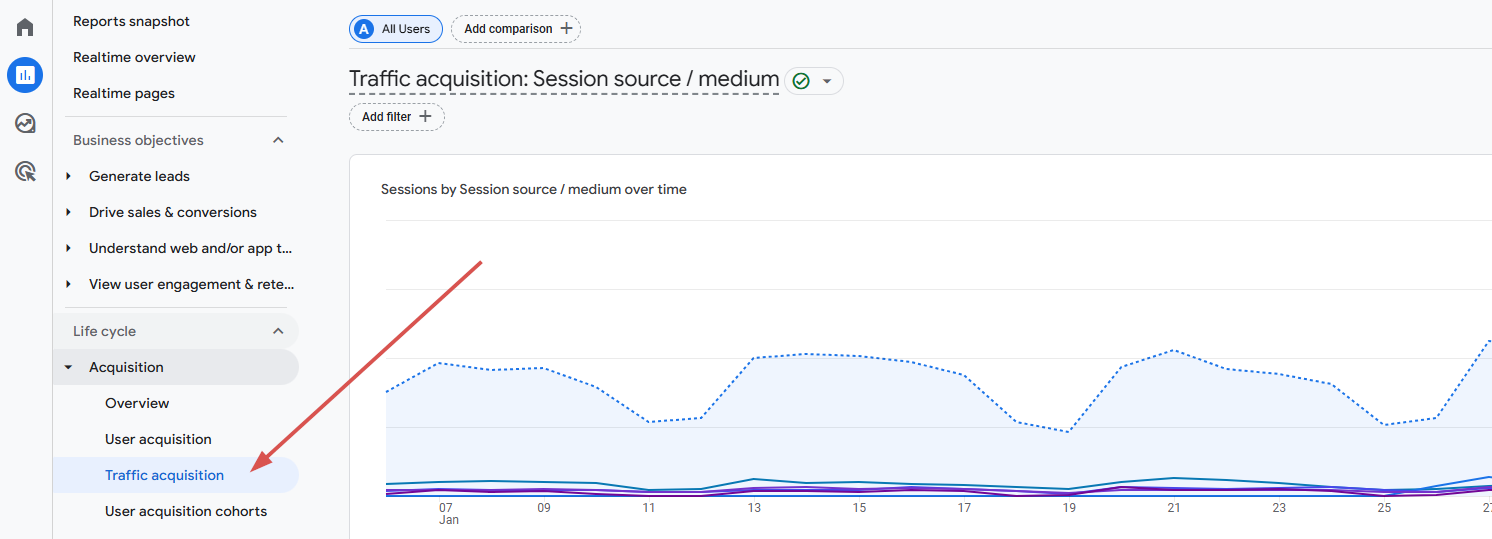
The takeaway for you and your business: AI search is creating new business opportunities and it will continue to do so.
It’s important to evaluate these new opportunities and how they can be integrated into your existing marketing strategy.
Prioritize high-impact metrics
We’ve already made the case that a strong SEO strategy is the best approach for AI search visibility. We’ve also explained why traditional ranking factors like inbound links are still important in this new age of AI-powered search.
We can call these factors ‘high-impact metrics’ – i.e. metrics that have the strongest impact on both organic rankings and new opportunities, such as AI overviews.
AI is speeding up the evolution of search, but the fundamentals don’t change overnight. This is why aspects like information accuracy are equally important to search and AI algorithms, even if for different reasons.
If you’re ever in doubt about what to optimize for, refocus on business opportunities and prioritize the high-impact metrics.
Create AI-enhanced content, not AI-generated content
While this isn’t directly related to AI-powered search, it’s still a widely discussed topic in the context of AI and SEO. When it comes to using AI technology for SEO, content generation has dominated the conversation in recent years. Generative AI’s ability to produce grammatically accurate text is a real breakthrough. The problem is that generative AI is intrinsically flawed as a content-creation tool.
The technology can only piece together information from data it has access to. In other words, generative AI can’t come up with anything new. It can only regurgitate existing information.
Another problem is that the quality of input data varies. Some information is correct, other information isn’t, and most of it is subjective.
This encourages AI algorithms to play it safe and mimic the most repeated information.
Despite all of the progress AI has made in recent years, it’s simply not capable of producing the content SEOs need without human input.
Instead of using AI to create content from scratch, find ways that you can use it to create the content you need faster and more cost-effectively:
- Draft meta descriptions
- Explore topics
- Expand lists of ideas
- Generate title ideas
- Draft article introductions
- Summarize your content for conclusions
- Generate definitions for terminology
- Rephrase sentences
- Source information and statistics
- Summarize research papers
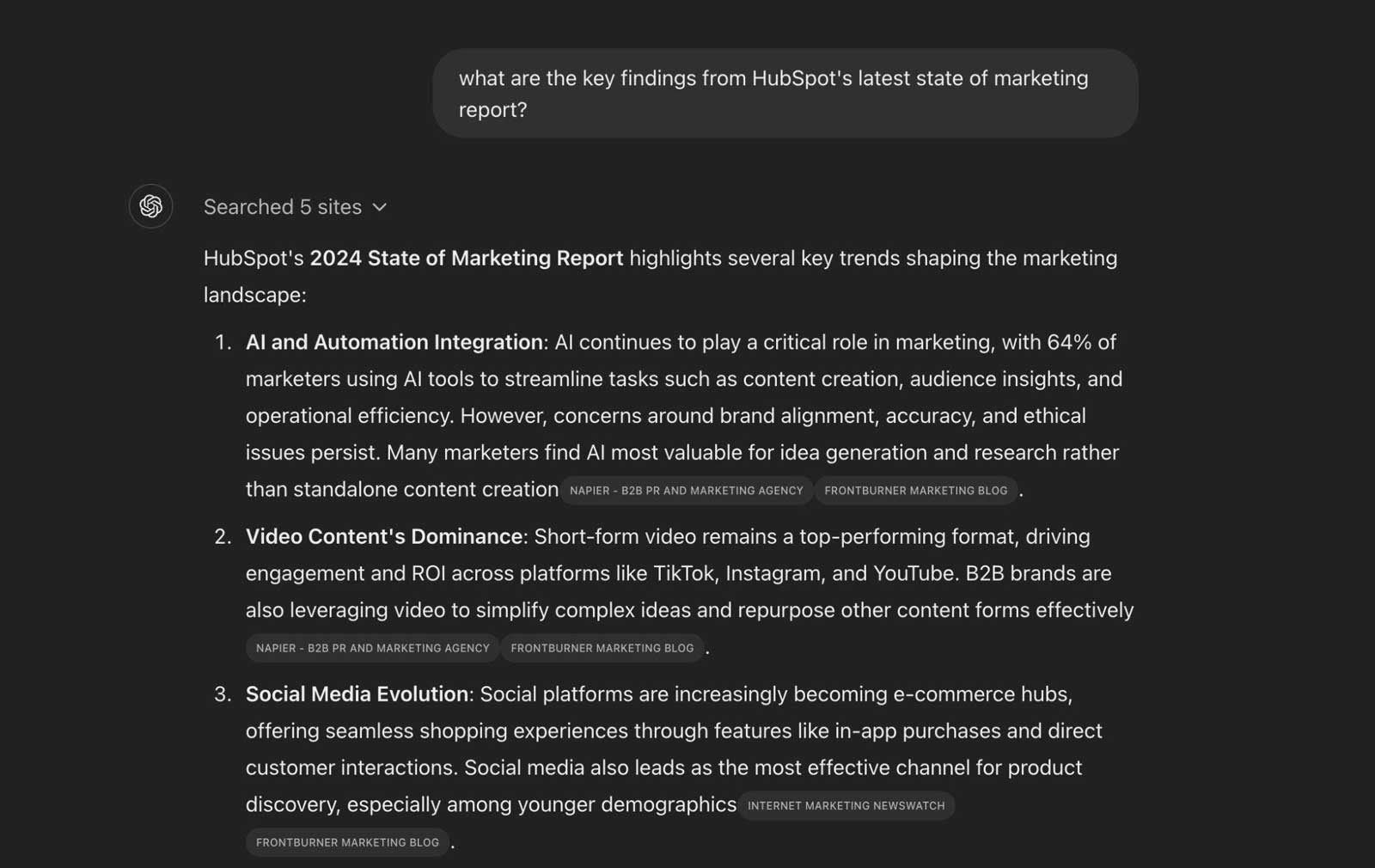
The problem with AI-generated content is that people expect the technology to do everything for them – and it can’t.
Generative AI isn’t going to produce unique or valuable content that has anything to offer that your audience can’t get from dozens of other places or more. However, it can help experienced marketers create high-quality, unique content faster if they know how to use it as a productivity tool.
What does the future hold for AI-powered search?
In this article, we’ve deliberately avoided trying to predict the future because the subject is so dynamic. The only certainty with AI search is that plenty of change lies ahead. Everything else is speculation at this point.
But as marketers look to the future, they do need to keep a few things in mind.
AI hype will yield to AI reality sooner or later
The hype surrounding AI remains intense, largely driven by unrealistic marketing messages from tech companies. However, the realization that AI can’t live up to the impossible expectations finally seems to be catching on.
When the hype fades, we’ll start to see the real impact of AI on search and get a better idea of what the future holds.
Explorational search is coming soon
Google has already teased the future of search with experimental features in Search Labs.
The previews point to an experience less reliant on multiple queries and a more engaging form of topical exploration, powered by generative AI.

Google is also expanding the multimedia search experience with tools like Lens. It’s currently testing a search with video feature that allows users to record clips and add queries to identify objects, solve problems and achieve other purposes.
For SEO and digital marketing more broadly, this change requires businesses to create rich, visually compelling content that can be easily interpreted by AI algorithms. Companies should look to prioritize mobile optimization and develop comprehensive multimedia assets that fully address diverse user intent.
As you’d expect, these tactics go far beyond simply targeting AI Overviews. In many cases, they correspond to accepted best practice, so often they represent an additional focus rather than a change in approach.
The foundation for success involves creating high-quality, contextually relevant content using images, video and text that demonstrates expertise and provides genuine value – something that should already be a primary focus of your marketing approaches.
You should also ensure that technical elements like metadata and alt text are optimized to make your content easy to interpret for different search algorithms and features. Also, make sure all content is accessible and loads quickly.
Re-incentivizing content production
Whatever direction AI search takes, the likes of Google and ChatGPT have a common problem: Google’s declining CTRs and generative AI both disincentivize the creation of original, high-quality content. Why should websites publish content that doesn’t drive any traffic, only to be scraped by AI algorithms and used to generate revenue for tech giants?
The paradox here is that traditional search and generative AI both rely on quality content to function. Google’s purpose dies without third-party content, and generative AI can’t create anything without quality input data.
So keep in mind: Google and other platforms need the high-quality content that your website can provide, just as much as your marketing needs these platforms.
Less generative AI, more productive AI
The current implementations of generative AI in search offer little more than a demonstration of what the technology can do, but search providers are continuing to evolve, refine, and improve their products. While generative AI in search is currently limited in its practical utility and can often fall short of addressing specific user needs or solving real-world problems, even the current implementations are able to showcase the potential of AI technology.
A more productive approach to AI in search would focus on developing tools that enhance the user’s ability to find, verify, and understand information. Here are some practical examples of what the future might hold:
- Intelligent page summarization: Instead of generating potentially unreliable AI overviews of whole topics, search engines could offer AI-powered summaries of individual web pages. This feature would allow users to quickly assess the relevance and content of each search result, saving time and improving the overall search experience.
- Context-aware search assistants: AI could be employed to understand the user’s search intent more deeply, offering tailored suggestions and refining queries to yield more relevant results.
- Fact-checking aids: Search engines could integrate AI-powered fact-checking tools that automatically highlight claims and provide quick access to supporting or contradictory evidence from reliable sources.
AI is here to stay – and so are the SEO fundamentals
Whichever direction AI search takes, it’s clear that artificial intelligence has an integral role to play in the search experience. This will open new opportunities – but keep in mind: The SEO fundamentals won’t change in a hurry.
The most important ranking factors like quality inbound links will still have the strongest impact on visibility. We’re already seeing indications that signals like rankings, links, and citations influence AI search results. Likewise, accurate information will always be a priority for any search system.
Build the foundations of an SEO strategy fit for the age of AI search with Seobility – sign up for a free 14-day trial here.
